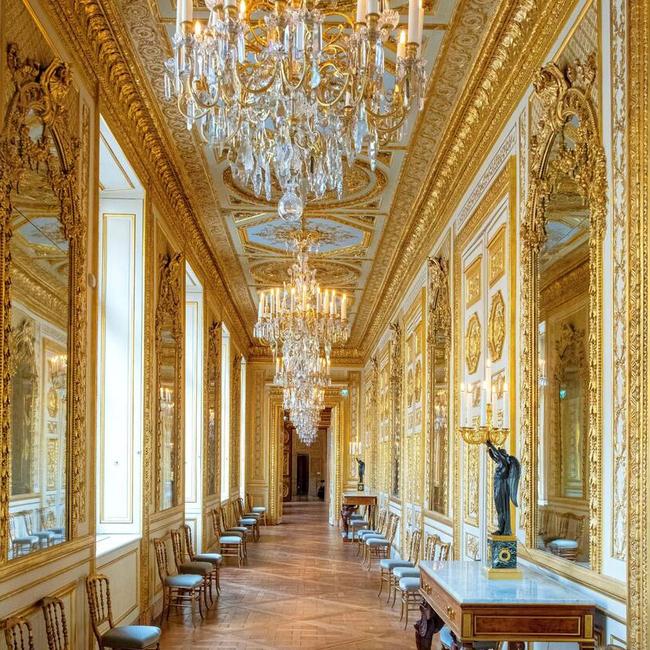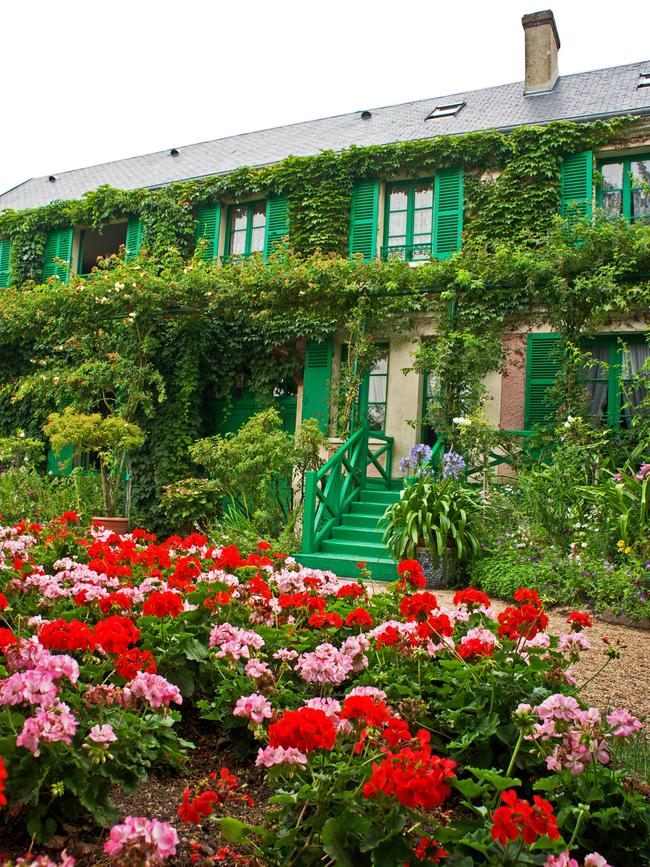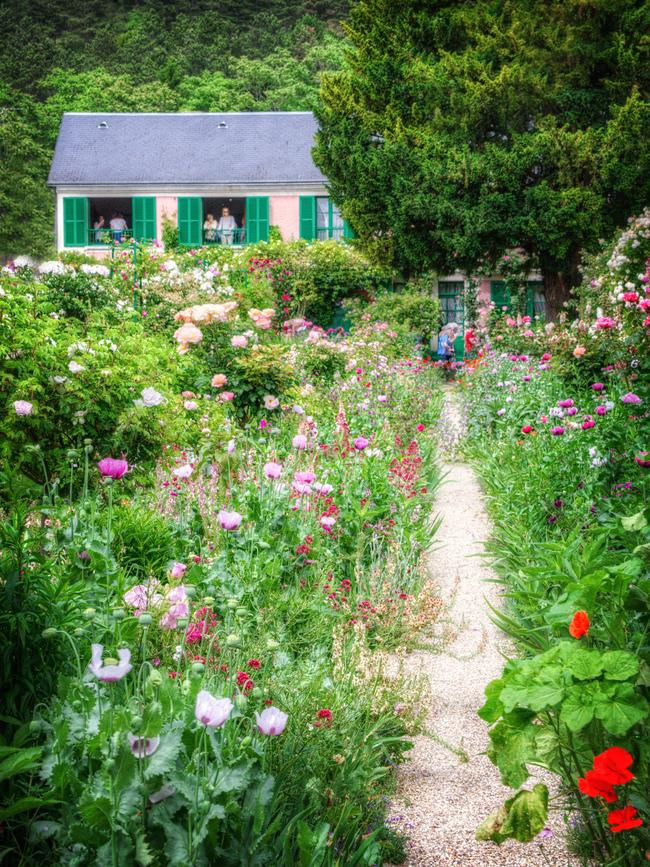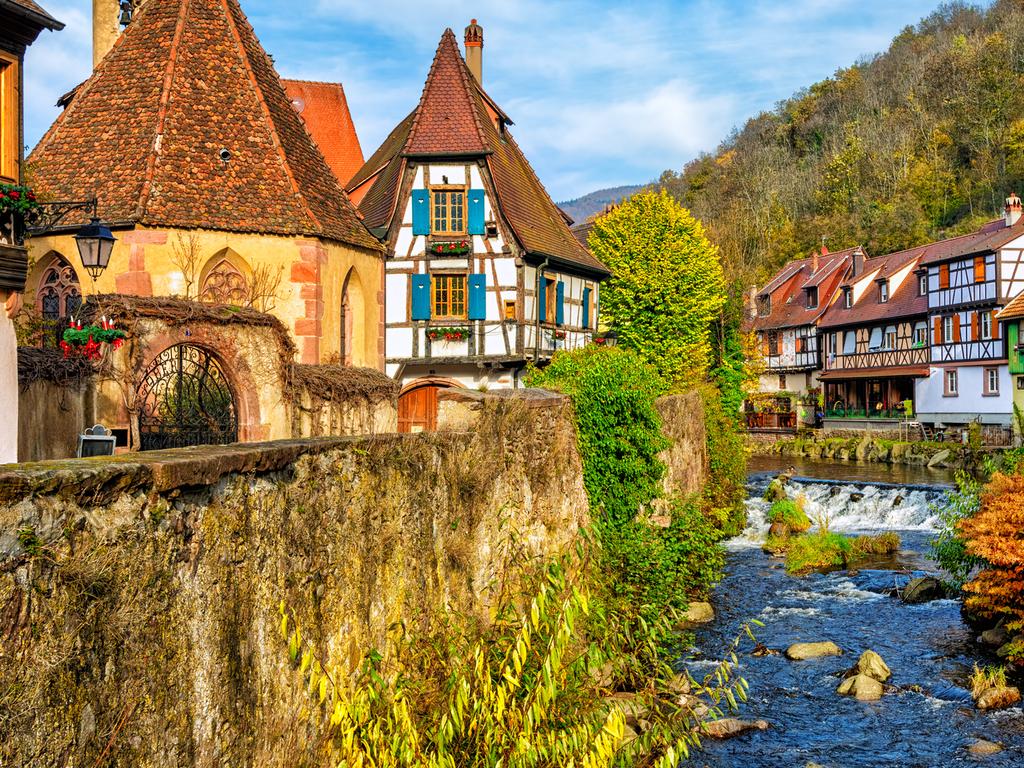Follow in the footsteps of Monet
Go beyond the famous Impressionist paintings and see where it all began in Paris and the villages of France.

It is springtime in Paris and the French capital is awash with wisteria and cherry blossom while in the Jardin des Tuileries, avenues of horse chestnut trees seem to be aflame with crimson flowers. At street level, however, the city’s elegant boulevards are chaotic, a tangle of scaffolding, rubble and road barriers.
The Summer Olympics are on their way and change is everywhere: the Place de la Concorde, where Marie-Antoinette lost her head, has, incongruously, been taken over by skateboard and BMX stadiums. Across the way, the Palais Bourbon, home of the French National Assembly, is home to six neon-hued Venus de Milo statues, refashioned with arms and each holding an object symbolising an Olympic sport.
It was spring in Paris 150 years ago, too, when a raggedy band of 31 artists boldly turned their backs on the Salon, the centuries-old, state-sponsored art exhibition and opened their own audacious and fiercely independent show.
The city had just emerged from the mayhem of the Franco-Prussian War and the uprising led by the Communards, who had also turned the city upside down, tearing down monuments and buildings and turning the streets to a war zone.

Fired by this atmosphere of protest and change, the rebel painters set up and funded a kind of co-op, the Societe des Artistes Anonyme, effectively giving the finger to the Salon’s stuffy, traditionalist art juries. The group’s first independent show, hung in the gloriously, light-filled, red-and-gold studio of pioneer photographer Felix Nadar, boasted 165 works, painted in myriad styles by artists both known and unknown.
Enticing newspaper ads promised a heady immersion into the “modern”, welcoming visitors day and night – unheard of at the time – thanks to the clever placement of gas lighting. Among the greats listed on the catalogue were Eugene Boudin, Paul Cezanne, Edgar Degas, Claude Monet, Berthe Morisot, August Renoir, Alfred Sisley, Giuseppe de Nittis and Camille Pissarro.
Art history textbooks of course now tell us this so-called Premiere Exhibition would not only strike a mortal blow to the Salon, sole arbiter of French art since 1667, but led critic Louis Leroy to coin the word “Impressionism” even if he was writing rather derisively about Monet’s 1874 picture of the port of Le Havre, titled Impression, Sunrise.
It’s an astonishingly modern work of loose, gestural brushstrokes merely suggestive of fishing boats and factory smokestacks amid a misty, rosy dawn. For me, seeing this 150-year-old painting in real life is just one unforgettable moment in an 11-day journey from Paris down the Seine River to Normandy, following in the footsteps of the Impressionists and ending with the glorious gardens and water lily ponds of Monet’s Giverny.

Organised by Renaissance Tours with the Art Gallery of NSW, the adventure begins with a three-day art history immersion in and around Paris, including an afternoon in the Musee d’Orsay to see the blockbuster anniversary show, Paris 1874: Inventing Impressionism.
The trip, led by the knowledgeable and indefatigable Julie Ewington, writer, curator and former head of Australian art at the Queensland Art Gallery, is full of enlightening “ooh- ah” art history moments, delivered with style and gusto during evening lectures in our Paris hotel and later, aboard the boat.
Walking through Musee de l’Orangerie, we learn about Monet’s frustrations and fears painting the water lilies series, his battle with cataracts and ferocious desire to capture “one instant, one aspect of nature that contains it all”.
Later, we spend a delightful morning mooching around the Musee Marmottan, a gem housed in a former hunting lodge and home to an unparalleled collection of Monet’s works, from his earliest days as a teenage caricaturist to the splendour of his Rouen Cathedral series. Dinner in a buzzy brasserie on the rue de Capucines not far from the first rebel show ends a glorious day.

Haussmann’s Paris (and its homogenous balanced elegance despite the Olympics) never disappoints and a true highlight, before boarding our cruise, is a visit to the recently reopened Hotel de la Marine on the Place de la Concorde.
Designed by architect Ange-Jacques Gabriel in the mid-1700s, it began life as the Garde Meuble, effectively the office that managed and took care of royal palace furnishings. In the wake of the Revolution, it became the Ministry of the Navy and only opened its doors to the public after a six-year restoration in 2021.
Inside, it’s a feast of eye-watering opulence: grand staircases and apartments furnished to hark back to the original stewards; a Cabinet of Mirrors and a dazzling crystal and glass dome. The long columns of the external loggia overlook the historic la Concorde and, in the distance, the Eiffel Tower. One not to be missed, although a visit to Chateau Vaux-le-Vicomte, built in 1656 on the orders of Nicolas Fouquet, finance minister to King Louis XIV, and set in a garden designed by the great Andre Le Notre, is equally imposing.
Its priceless furniture, art and pioneering circular, domed ballroom sparked such envy in the young king that it led to Fouquet’s arrest and imprisonment for treason. It would inspire the building of Versailles and poor old Fouquet’s furniture, art, objects and sculpture became part of the royal collection. A shared, delicious group lunch on a wisteria-covered terrace overlooking the imposing gardens only adds to the moment.

Saying farewell to Paris is always a wrench but when you are boarding Amadeus Diamond, a luxurious Austrian riverboat, at cocktail hour to begin a leisurely, seven-day cruise, we all rally. The ship sets sail after a spectacular evening storm and as the lights of Paris colour and refract the rain splattering on my cabin window, I feel as if I am seeing the world through the lens of the Impressionist artists who had long ago painted the city with such feverish joy.
That first night sets the rhythm of our evenings as we all meet in the ship’s panorama lounge at twilight over a glass of fizz – and, later, delicious multi-course dinners – and we listen as Ewington explains and shows us important moments and paintings in the canon of late 19th-century French art.
The Seine flows and flurries as villages, farmhouses and factories pass by, framed fleetingly in the riverboat’s huge plate-glass windows. The Seine is a working river and the voyage toward Normandy offers an equal mix of bucolic countryside and 21st-century industry. At times, one side of the ship frames picture-postcards of tiny cottages, weeping willows and colourful hay barns while on the other side it is a moving Jeffrey Smart painting of shipping containers and cranes, billowing power stations and working factories.
Each stop, as we pass through the Ile de France surrounding Paris and down into the green fields of Normandy, is chosen not just for its beauty but its importance in the lives of the Impressionists who took their easels and paints outdoors, en plein air, to examine and depict nature and the outdoors their way.

In Le Havre, we see the very spot, quayside, where Monet’s Impression, Sunrise was painted and the brutally modernist vision of the architect, Auguste Perret, including his soaring, cement St Joseph’s Church. In Rouen, Monet’s beloved Notre Dame cathedral, an intricate, Gothic masterpiece, rises from a perfectly preserved medieval streetscape of timber houses. In Etretat, there’s the majestic cliffs, rocks and crescent beach that have inspired painters and writers for centuries, and a hilltop garden with topiary so imaginative I feel a little like Alice in Wonderland.
A particularly off-piste, fantastic find thanks to Ewington on a rare free afternoon is the Rouen Ceramic Museum, home to about 5000 pieces of historic porcelain and ceramic. A fellow traveller and I spend a glorious afternoon, alone and without crowds, examining a collection ranging from tin-glazed earthenware to the finest Sevres porcelain.
We gaze at two exquisite, celestial porcelain spheres dating from 1725 that depict what was known of the Earth and universe at the time of their making, including the imperfectly mapped top of Australia – labelled Nouvelle-Hollande – sitting alone in the Mer du Sud above a vast, unexplained nothingness.
For me, it is walking the pretty streets of Auvers-sur-Oise and seeing the tiny Auberge Ravoux where Vincent van Gogh spent his final months that leaves an indelible memory. Observing the bare, ascetic room where he lay, mortally wounded, for two days before dying so young strikes me viscerally. Later, a traipse up the hill, with lush avenues of iris plants in flower, leads us to the famous stairs he painted just a few months before his death. In the forlorn, windswept cemetery, his grave, joined by ivy with that of his beloved brother, Theo, moves us all to a respectful, saddened silence.

Our final stop, at Vernon to see Monet’s Giverny, unfolds on a grey day amid unfathomably large crowds, but nothing can tarnish its beauty. Wisteria with the longest racemes wafts down to the ponds. Climbing roses, fields of iris, azalea and rhododendron hedges framed by fragrant climbing jasmine create a riot of colour.
Inside the green-shuttered house is his famous sunshine-yellow dining room and dining chairs; the colour was chosen to counter the brown veil created by his cataracts. This, and the turquoise kitchen wall tiles, shiny copper pans and blood red, diamond-patterned floors make me want to rush home and renovate.


As an inveterate independent adventurer, I never thought I’d enjoy group travel but this trip leaves me with much more than holiday memories. Led by our expert guide, I have gained a nuanced understanding of the Impressionists, placing them in their geographical and historical context, and all of it underpinned by the joy of seeing artworks I knew only from colour plates in books. Add to this nightly conversation and friendships forged through shared experience and fuelled by meals and local wine (ladies, you know who you are) and this trip has made me if not a total convert, then certainly a big fan.
In the know
The next Renaissance Tours art trip in France is Allure of the Cote d’Azur, helmed by Julie Ewington. The 10-day trip departs on September 10 from Nice and ends in Marseille. From $11,450 a person, twin-share.
Paris 1874: Inventing impressionism is on at the Musee d’Orsay until July 14
Paola Totaro was a guest of Renaissance Tours.
If you love to travel, sign up to our free weekly Travel + Luxury newsletter here.




To join the conversation, please log in. Don't have an account? Register
Join the conversation, you are commenting as Logout